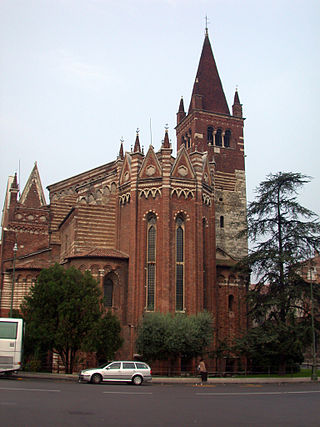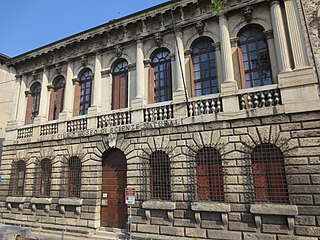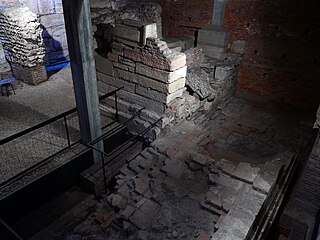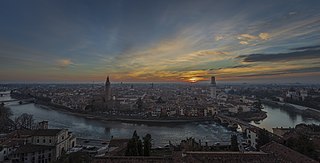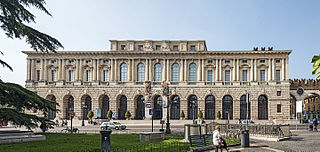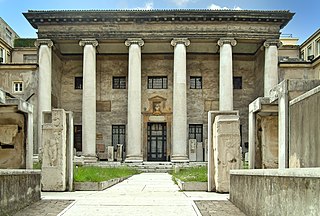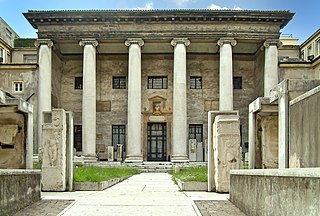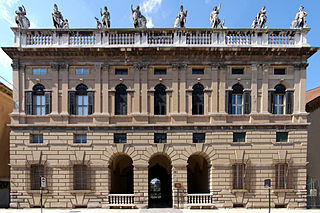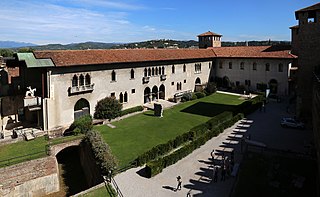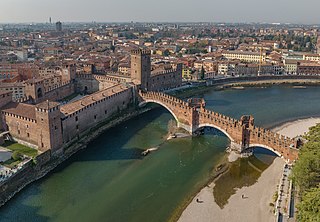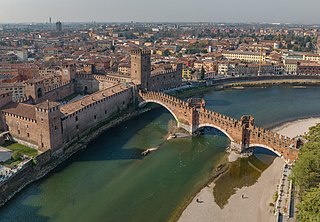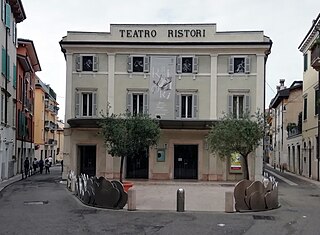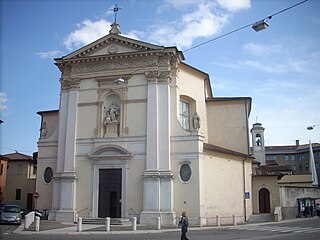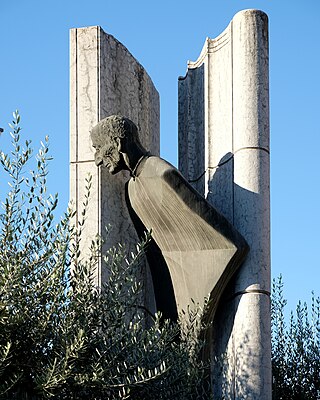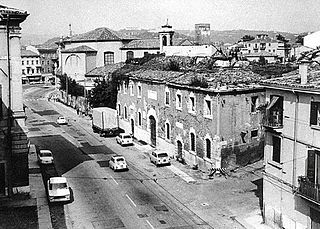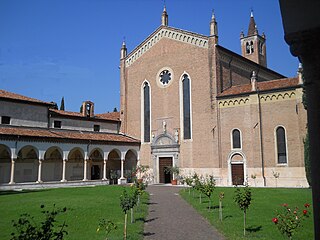Self-guided Sightseeing Tour #3 in Verona, Italy
Legend
Guided Free Walking Tours
Book free guided walking tours in Verona.
Guided Sightseeing Tours
Book guided sightseeing tours and activities in Verona.
Tour Facts
5.2 km
80 m
Experience Verona in Italy in a whole new way with our free self-guided sightseeing tour. This site not only offers you practical information and insider tips, but also a rich variety of activities and sights you shouldn't miss. Whether you love art and culture, want to explore historical sites or simply want to experience the vibrant atmosphere of a lively city - you'll find everything you need for your personal adventure here.
Activities in VeronaIndividual Sights in VeronaSight 1: Chiesa dei Padri Filippini
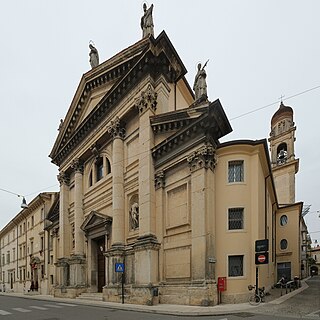
The church of San Fermo Minore di Brà, better known as the church of the Filippini, is a Catholic place of worship located in the heart of the historic center of Verona; it is a parish church that is part of the vicariate of Verona Centro in the diocese of the same name.
Wikipedia: Chiesa dei Santi Fermo e Rustico dei Filippini (IT)
Sight 2: Chiesa di San Fermo Maggiore
San Fermo Maggiore is a Romanesque and Gothic church in central Verona. It is dedicated to Saints Firmus and Rusticus, brothers who are local martyrs from the 3rd century.
Sight 3: Natural History Museum Verona
The Civic Museum of Natural History is a museum in Verona housed since 1833 in Palazzo Pompei, Lungadige Porta Vittoria, 9. It collects about 3 million artifacts.
Wikipedia: Museo civico di storia naturale (Verona) (IT), Website
Sight 4: Porta Leoni
Get Ticket*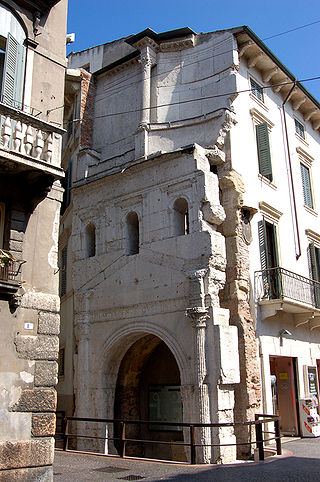
Porta Leoni is an ancient Roman gate in Verona, northern Italy.
Sight 5: Area archeologica di via San Cosimo
The archaeological area of Via San Cosimo is located in Via San Cosimo 3 in Verona, near the ancient Roman city walls and below the courtyard of the institute of the Daughters of Jesus nuns.
Sight 6: Chiesa di Santa Maria della Scala
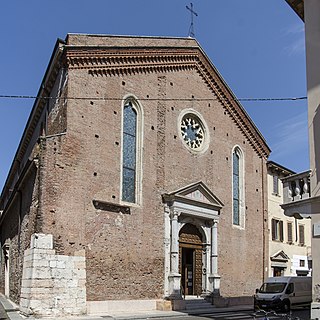
The church of Santa Maria della Scala is a Catholic place of worship located in the historic center of Verona, a few steps from Via Mazzini; it is part of the diocese of Verona.
Sight 7: Chiesa di San Nicolò
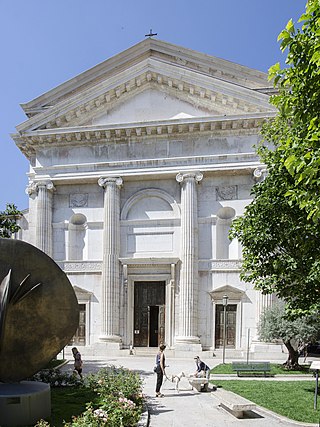
The church of San Nicolò all'Arena is a Catholic place of worship located in the heart of the historic center of Verona, behind the Roman amphitheater; it is a parish church that is part of the vicariate of Verona Centro in the diocese of the same name.
Sight 8: Verona
Verona is a city on the River Adige in Veneto, Italy, with 258,031 inhabitants. It is one of the seven provincial capitals of the region, and is the largest city municipality in the region and in northeastern Italy. The metropolitan area of Verona covers an area of 1,426 km2 (550.58 sq mi) and has a population of 714,310 inhabitants. It is one of the main tourist destinations in Northern Italy because of its artistic heritage and several annual fairs and shows as well as the opera season in the Arena, an ancient Roman amphitheater.
Sight 9: Palazzo della Gran Guardia
The Gran Guardia is a civil building that delimits the southern side of Piazza Bra in Verona, whose construction began in the seventeenth century and ended, after a long pause, only in 1853. With its size and monumentality it manages to compete with the Arena, which is located a few tens of meters away, beyond the nineteenth-century Bra gardens.
Sight 10: Maffei Museum
The Maffeian lapidary museum, founded in the first half of the eighteenth century by the Veronese scholar Scipione Maffei, is one of the oldest European public museum institutions, located in the heart of the historic center of Verona, within the municipal walls, overlooking Piazza Bra and a few steps from the Arena di Verona.
Sight 11: Teatro Filarmonico
The Teatro Filarmonico is the main opera theater in Verona, Italy, and is one of the leading opera houses in Europe. The Teatro Filarmonico is property of the Accademia Filarmonica di Verona. Having been built in 1716, and later rebuilt after a fire of January 21, 1749, and again after the allied bombing of February 23, 1945.
Sight 12: Arco dei Gavi
Get Ticket*
The Arco dei Gavi is an ancient structure in Verona, northern Italy, situated at the beginning of the Via Postumia, just outside the Roman walls of the city. Built to celebrate the gens Gavia, a noble Roman family who had their hometown in Verona, the Arco dei Gavi is a very rare example of a privately funded monumental Roman arch.
Sight 13: Palazzo Canossa
Palazzo Canossa is a palace in Verona, northern Italy.
Sight 14: Museo di Castelvecchio
Castelvecchio Museum is a museum in Verona, northern Italy, located in the eponymous medieval castle. Restoration by the architect Carlo Scarpa between 1959 and 1973 has enhanced the appearance of the building and exhibits. Scarpa's architectural style is visible in the details for doorways, staircases, furnishings, and even fixtures designed to hold a specific piece of artwork. The renovation carefully balanced new and old, revealing the history of the original building where appropriate. Unusual at the time, this approach has now become a common approach to renovation.
Sight 15: Ponte Scaligero
The Castel Vecchio Bridge or Scaliger Bridge is a fortified bridge in Verona, northern Italy, over the Adige River. The segmental arch bridge featured the world's largest span at the time of its construction.
Sight 16: Castelvecchio
Get Ticket*Castelvecchio is a castle in Verona, northern Italy. It is the most important military construction of the Scaliger dynasty that ruled the city in the Middle Ages.
Sight 17: Chiesa di San Zeno in Oratorio
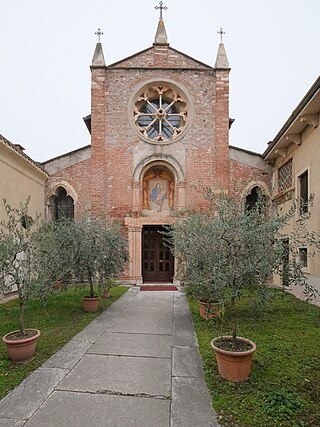
The church of San Zeno in Oratorio, also known as the church of San Zenetto, is a Catholic place of worship located in the San Zeno district of Verona, a few steps from Castelvecchio; it is part of the diocese of Verona.
Sight 18: Teatro Ristori
The Teatro Ristori is a theatre in the city of Verona, with a capacity of 496 seats inaugurated in 1844 and reopened in 2011 after a long restoration work.
Sight 19: Chiesa degli Scalzi
Santa Teresa degli Scalzi, known as the church of the Scalzi is a Baroque style, Roman Catholic church located in central Verona, region of Veneto, Italy.
Sight 20: Don Giuseppe Chiot
Giuseppe Chiot was an Italian priest.
Sight 21: Carcere degli Scalzi
The Prison of the Discalced was a convent of the Order of Discalced Carmelites adjacent to the church of the Discalced in Verona, built between 1666 and 1750, suppressed in 1806 by Napoleonic decree and used as a prison from 1883 to 1945.
Sight 22: San Bernardino
San Bernardino is a church in Verona, northern Italy. The church, in Gothic style, was built from 1451 to 1466.
Sight 23: Porta Palio
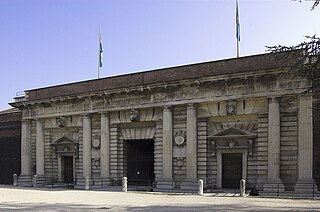
Porta Palio is a gate or portal of the former outer medieval walls of the city of Verona, Italy. It was designed and built during 1550–1561 by the architect Michele Sanmicheli.
Share
How likely are you to recommend us?
Disclaimer Please be aware of your surroundings and do not enter private property. We are not liable for any damages that occur during the tours.
GPX-Download For navigation apps and GPS devices you can download the tour as a GPX file.
